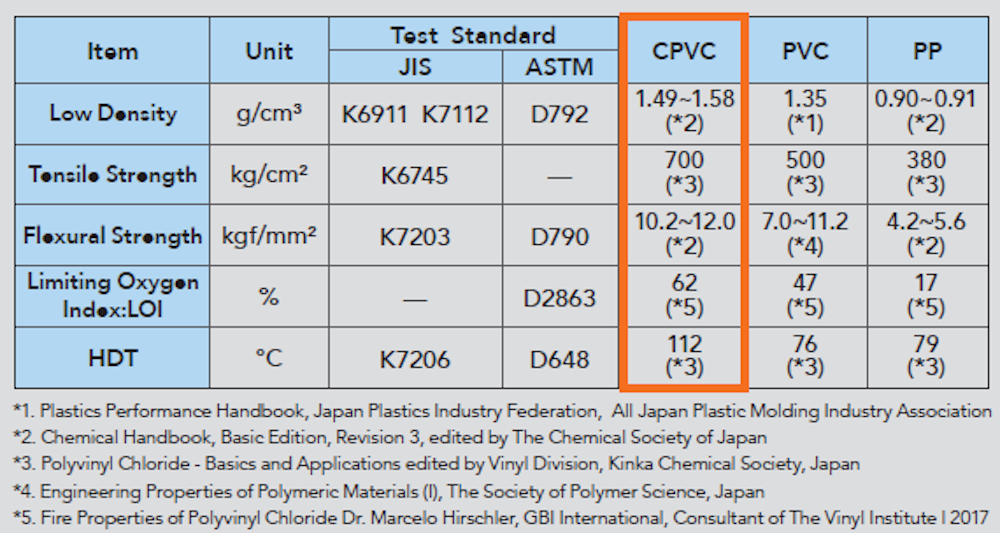Piping is made of a variety of materials, depending on its application. They can be broadly divided into metals and plastics, and within metals there are various types, such as copper and iron. Plastics also include PVC(polyvinyl chloride resin), PE(polyethylene), PP(polypropylene), etc. CPVC (chlorinated polyvinyl chloride resin) is a high-performance plastic material that shows excellent performance in a particularly wide range of applications. Here, the characteristics of CPVC are explained in comparison with other metals and plastic materials.
The requirements for piping are varied and include mechanical properties such as bending and tensile strength, electrical properties such as volume resistance and voltage resistance, chemical resistance to acid, alkalis and solvents, resistance to heat such as heat resistance and flame resistance, lightness, ease of processing at the implementation site, and price.
CPVC is a material that exhibits excellent properties in a wide range of requirements. While other materials may be superior in a single area, CPVC’s overall high performance makes it versatile and applicable to a wide range of piping applications.

The diagram below compares CPVC with PP (polypropylene), which is often used in plastic piping, and PVC (polyvinyl chloride resin).
CPVC is denser and heavier than other plastic materials due to its chlorinated nature, but it performs better than other plastic materials in terms of heat resistance, flame resistance, tensile and flexural strength.


There are two main advantages of CPVC over metal materials.
If the liquid flowing through the pipework contains high levels of chlorine, rust can occur and metal pipework can rapidly deteriorate. In addition, scale* can clog the inside of pipes, requiring cleaning and replacement. Metal pipes deteriorate due to contamination by acids and alkalis, but CPVC is less likely to deteriorate due to rust and corrosion and is less prone to scale adhesion, so a long service life can be expected.
*Scale: A substance dissolved in the liquid flowing in the pipework that precipitates and adheres to the inside of the pipework. It is a type of water stain.
Pipes made from CPVC are lightweight and very easy to handle on the construction site.
They can also be easily cut and glued during implementation, which contributes to reduced manpower costs during implementation work. It also reduces the number of man-hours required to train workers.